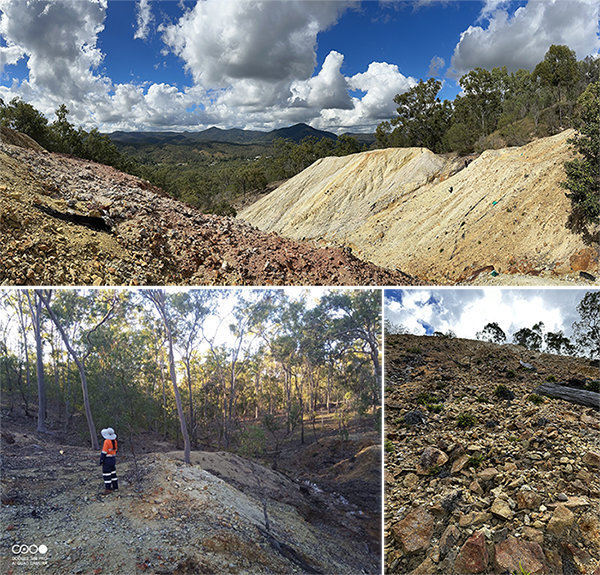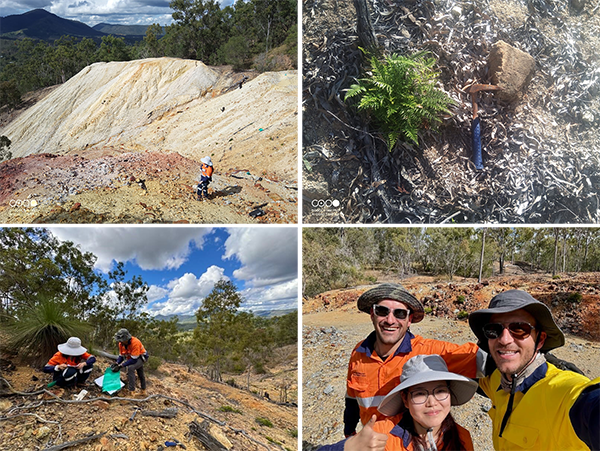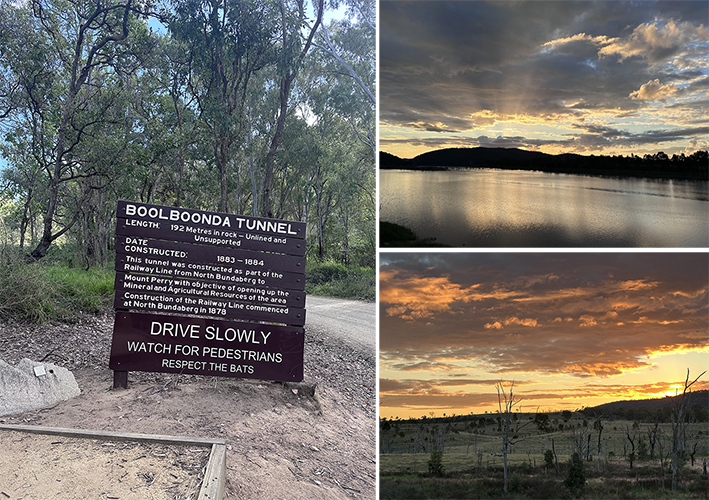Mine Waste fieldwork venture in Normanby QLD: Sampling for waste rocks and slags
Just weeks back to Australia since completing my undergraduate studies, I eagerly volunteered for my inaugural field mission alongside MIWATCH. MIWATCH provides a highly multicultural work environment, where colleagues from diverse national backgrounds shine in various positions. Being the freshest face on the crew, I couldn’t help but marvel at their bustling productivity across various projects. Having prior field experience during my bachelor study, I anticipated the thrill of getting my hands dirty once more on this journey!
With MIWATCH’s Francesco Colombi, our courageous and dynamic fieldwork champion, our venture started and I made sure that I stuck close by to Francesco for the duration of the sampling campaign targeting waste rock. Normanby, our target site, is located near the township of Mount Perry in South-East Queensland, approximately 400 km North-North West of Brisbane. Copper was discovered in outcrops at Mt Perry in 1869 with high Cu grades (20-25%) measured which occurred in vein systems (Ellis 1968). The mine was a small-scale underground operation targeting oxidized and sulphide ores. Recent activities at the site have included the heap leaching of waste dump material but now, the site is currently abandoned (Ashley 2003). During the major active period, aggregate metal production was reported by Cranfield (1994) as 17,270 t Cu, 750 kg Au and 24,570 kg Ag. Meanwhile, huge amounts of slag residue was generated due to the smelting operations commenced in 1872. The remaining waste dump materials were of interest to MIWATCH due to its likely notable endowment in Cu, Au, and Ag.
On an early Monday morning, we drove from Brisbane to Mt Perry. Upon arrival, we met with Kobie Johnson from the Department of Resources, Queensland Government, and after a quick lunch we set out to scope the potential sampling locations. We selected two main waste rock dumps proximal to the lodes of the abandoned mine and the slag close to the town of Mt Perry for sampling.

The next day we started early and ventured to the high hills to target waste rock as our first location. Despite the hot weather, we quickly gathered rock samples from these waste rock dumps. Recognizing the crucial role of physical strength in these campaigns, I appreciated the assistance of Francesco and Kobie, two very robust individuals! With their support, I pushed myself to the max to help ensuring completion of our target. After collecting around 20 waste rock samples, we paused for a well-deserved lunch break near a narrow creek, offering brief respite from the rugged terrain. In the afternoon, we continued downhill, collecting more grab samples. In total, we got 32 samples from the dump hill on our first sampling day and an additional 21 samples from other sites. Kobie provided invaluable assistance throughout our endeavours – we couldn’t thank him more!

At the end of the day we were rewarded with a breathtaking sunset against the backdrop of a picturesque lake, offering a moment of tranquillity after two days of strenuous work. Our field campaign concluded with a tour of an old tunnel near the town, where we marvelled at the sight of baby bats resting along the walls. Initially appearing weathered by hand, closer inspection revealed intriguing textures within the rocks.

My first field campaign was definitely memorable. Not only was I fortunate to encounter intriguing waste rocks, spiders, plants all in one trip, but I was also able to explore the extent of my own capabilities. I feel fortunate to explore the potential of mine waste within MIWATCH team and foster a more sustainable Earth!
References:
Ashley P.M., Lottermoser B.G. & Chubb A.J. 2003, Environmental geochemistry of the Mt Perry copper mines area, SE Queensland, Australia. Geochemistry Exploration, Environment, Analysis. Vol.3, pp. 345-357.
Cranfield L.C. 1994, Maryborough, Queensland, 1:250 000 geological series – explanatory notes. Geological Survey Queensland, Brisbane.
Ellis P.L. 1968, Geology of the Maryborough 1:250 000 sheet area. Geological Survey Queensland. Report 26.
